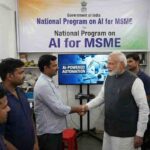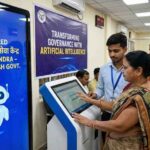Lucknow, 2025 — With its vast human resources, strategic geographic location, and rich cultural heritage, Uttar Pradesh (UP) is strategically positioning itself as a model of economic resilience. This resilience is not just about enduring economic shocks but also about capitalizing on the state’s inherent strengths to foster sustainable growth. This article examines how UP is crafting a blueprint for economic resilience, highlighting the strategies and initiatives that contribute to its robust economic framework.
Core Elements of UP’s Economic Resilience Strategy
- Diversification of the Economy
- Approach: UP is actively diversifying its economic base beyond traditional agriculture to include manufacturing, services, and high-tech industries.
- Benefit: This diversification helps stabilize the economy against sector-specific downturns and creates a broader base for employment and wealth generation.
- Investment in Infrastructure
- Projects: Significant investments in infrastructure, such as improved transportation networks (roads, airports, railways), energy grids, and digital connectivity, are essential components of UP’s strategy.
- Impact: Robust infrastructure supports industrial growth, enhances logistics, and improves access to markets, thereby strengthening economic resilience.
- Enhancing Human Capital
- Education and Training: Focused investments in education and vocational training to equip the population with skills relevant to modern industries.
- Outcome: A skilled workforce is more adaptable and can transition between industries, supporting economic stability and growth.
- Fostering Innovation and Technology
- Initiatives: Encouraging innovation through support for tech startups, research and development centers, and partnerships with academic institutions.
- Result: Innovation drives productivity and economic efficiency, positioning UP as a competitive player in national and global markets.
Strengthening Social Safety Nets
- Healthcare and Social Programs: Comprehensive healthcare services and social welfare programs ensure that the workforce remains healthy and that no one is left behind during economic transformations.
- Impact: Strong social safety nets enhance societal well-being and contribute to a stable economic environment by reducing poverty and inequality.
Promoting Sustainable Practices
- Environmental Sustainability: Emphasizing sustainable agricultural practices, conservation of natural resources, and green energy solutions.
- Significance: Sustainable practices ensure the long-term viability of natural resources, which are crucial for economic activities and help mitigate the impacts of climate change.
Building Financial Resilience
- Economic Policies: Implementing prudent fiscal and monetary policies to manage economic cycles effectively.
- Financial Inclusion: Expanding access to financial services across all strata of society to promote entrepreneurship and enable households to manage economic shocks better.
Challenges to Economic Resilience
- Regional Disparities: Addressing the development gap between urban and rural areas remains a challenge.
- Policy Execution: Ensuring effective implementation of policies and monitoring their progress is crucial for achieving desired outcomes.
Conclusion: Toward a Resilient Economic Future
As Uttar Pradesh continues to implement its comprehensive economic resilience strategy, it serves as a potential blueprint for other states. By focusing on economic diversification, infrastructure development, human capital enhancement, innovation, sustainability, and strong governance, UP is not just preparing to withstand future economic challenges but is also paving the way for sustained economic prosperity. The success of these initiatives could indeed make UP a model of economic resilience, showcasing how a large, diverse region can transform its challenges into opportunities for growth and stability.












